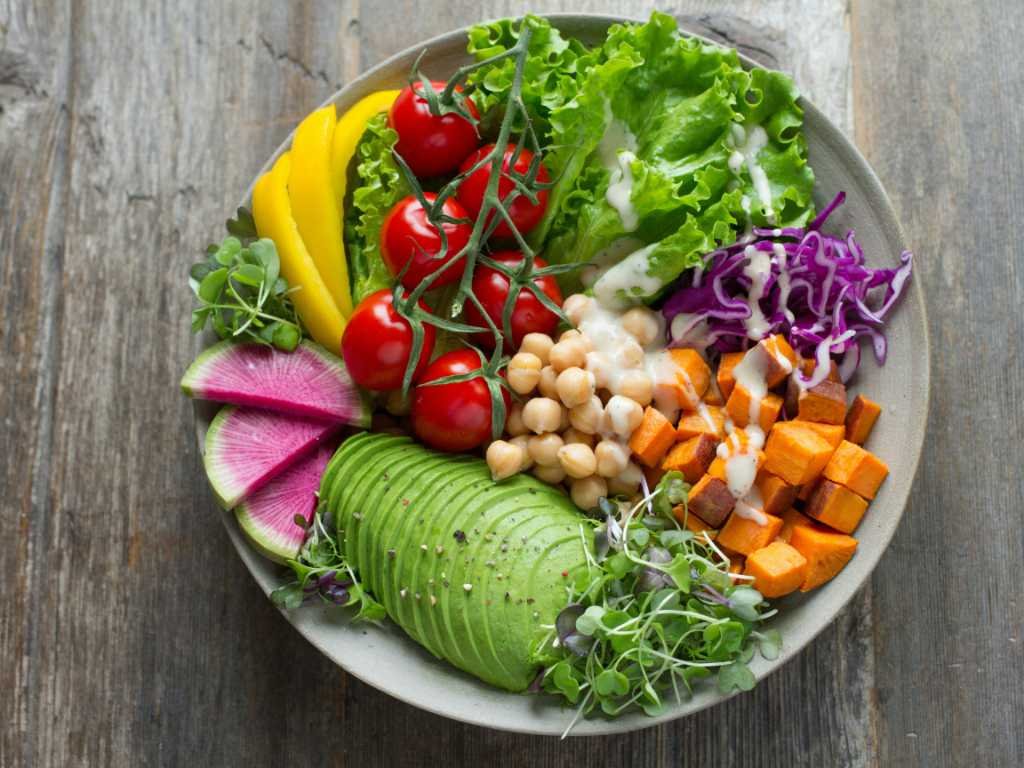Table of Contents
Ever wondered why some people seem to effortlessly achieve their fitness goals while others struggle despite putting in the same effort at the gym? The answer often lies not in the workout routine, but in what’s on their plate. Your diet for fitness goals is the secret sauce that transforms decent results into incredible transformations.
Think about it—you can’t out-exercise a bad diet. Whether you’re trying to shed those stubborn pounds, build lean muscle, or simply maintain your current physique, what you eat plays a massive role in determining your success. It’s like trying to fill a bucket with a hole in the bottom; without proper nutrition, your fitness efforts might just be going to waste.
The truth is, achieving your fitness goals isn’t just about sweating it out in the gym. It’s about creating a harmonious relationship between your workouts and your nutritional planning. Your body needs the right fuel to perform, recover, and adapt to the demands you’re placing on it.
Understanding Your Unique Fitness Goals
Before diving into meal plans and calorie counting, let’s get real about what you’re actually trying to achieve. Are you looking to lose weight, gain muscle, improve endurance, or maybe just maintain your current physique? Each goal requires a completely different approach to nutrition.
Weight loss typically involves creating a calorie deficit—burning more calories than you consume. But it’s not just about eating less; it’s about eating smarter. You need to maintain adequate protein intake to preserve muscle mass while losing fat.
Muscle gain, on the other hand, usually requires a calorie surplus along with increased protein intake. You’re essentially providing your body with the building blocks it needs to repair and grow stronger after those intense training sessions.
Endurance goals focus more on carbohydrate timing and glycogen replenishment, while maintenance is all about finding that sweet spot where your energy intake matches your expenditure.
Here’s where it gets interesting—your current fitness level, body composition, and even genetics play a role in determining the best approach for you. A 25-year-old athlete will have different nutritional needs than a 45-year-old beginner. That’s why personalized planning beats generic diet plans every single time.
Mastering the Art of Nutrition Planning
Let’s talk about the foundation of any successful diet for fitness goals—understanding macronutrients and how they work together. Think of macronutrients as your body’s three main fuel sources, each with its own special job.
Carbohydrates are your body’s preferred energy source, especially during high-intensity workouts. They’re like the gasoline in your car—without them, you’ll feel sluggish and struggle to push through challenging training sessions. The key is choosing complex carbs like quinoa, sweet potatoes, and oats over simple sugars.
Proteins are the building blocks for muscle repair and growth. Every time you work out, you’re creating tiny tears in your muscle fibers. Protein helps repair these tears, making your muscles stronger and more resilient. Aim for a variety of sources—lean meats, fish, eggs, legumes, and plant-based options.
Healthy fats often get a bad rap, but they’re crucial for hormone production, nutrient absorption, and sustained energy. Think avocados, nuts, seeds, and olive oil. These aren’t just empty calories—they’re essential for optimal body function.
The magic happens when you balance these macronutrients according to your specific goals. A general starting point might be 40% carbs, 30% protein, and 30% fats, but this can vary significantly based on your objectives and activity level.

Strategic Weight Management Through Nutrition
When it comes to weight management, the age-old saying “calories in, calories out” still holds true, but it’s more nuanced than that. The quality of those calories matters just as much as the quantity.
First, you need to determine your baseline—how many calories does your body need to maintain its current weight? This depends on factors like age, gender, height, weight, and activity level. Once you know this number, you can adjust accordingly.
For weight loss, creating a moderate deficit of 300-500 calories per day typically leads to sustainable fat loss of 1-2 pounds per week. Going too aggressive with calorie restriction often backfires, leading to muscle loss, metabolic slowdown, and eventual weight regain.
For weight gain (specifically muscle gain), a modest surplus of 200-250 calories above maintenance is usually sufficient. More than this, and you risk gaining unwanted body fat alongside muscle.
The trick is choosing nutrient-dense foods that keep you satisfied while supporting your goals. Whole foods like lean proteins, vegetables, fruits, and whole grains provide more satiety and nutritional value per calorie compared to processed alternatives.
The Protein Powerhouse for Muscle Development
If muscle gain is your goal, protein deserves special attention in your diet for fitness goals. This macronutrient is absolutely crucial for muscle protein synthesis—the process by which your body builds new muscle tissue.
Research suggests that consuming 1.6-2.2 grams of protein per kilogram of body weight is optimal for muscle building. For a 150-pound person, that’s roughly 110-150 grams of protein daily. But it’s not just about hitting a number—timing and distribution matter too.
Spread your protein intake throughout the day, aiming for 20-30 grams per meal. This approach maximizes muscle protein synthesis better than consuming all your protein in one or two large meals.
Don’t get stuck thinking you need to eat chicken breast at every meal. Mix it up with:
- Fish and seafood for omega-3 fatty acids
- Eggs for complete amino acid profiles
- Greek yogurt for convenience and probiotics
- Legumes and beans for fiber and plant-based protein
- Quinoa and other ancient grains for complete proteins
The post-workout period is particularly important for protein consumption. Having a protein-rich snack or meal within 2-3 hours after training can optimize recovery and muscle building.
Building Sustainable Healthy Eating Habits
Here’s the thing about healthy eating habits—they need to be sustainable, not perfect. The best diet is the one you can stick to long-term, not the one that promises miraculous results in 30 days.
Start by focusing on whole, minimally processed foods. These foods are naturally more nutritious and satisfying than their processed counterparts. When you fill your plate with colorful vegetables, lean proteins, and whole grains, you’re naturally crowding out less healthy options.
One of the biggest game-changers is meal preparation. Spending a few hours on the weekend preparing proteins, chopping vegetables, and cooking grains sets you up for success throughout the week. When healthy options are readily available, you’re less likely to reach for convenience foods.
But let’s be realistic—life happens. Instead of viewing occasional indulgences as failures, build flexibility into your approach. The 80/20 rule works well for many people: eat nutritiously 80% of the time, and allow yourself some freedom the other 20%.
Hydration is another crucial but often overlooked aspect of nutritional planning. Proper hydration supports every bodily function, from nutrient transport to temperature regulation. Aim for at least 8 glasses of water daily, more if you’re active or live in a hot climate.
Creating Your Balanced Diet Framework
A truly balanced diet isn’t about restriction—it’s about inclusion. Every meal should be a symphony of nutrients working together to fuel your body and support your fitness goals.
Here’s a simple framework to follow: fill half your plate with non-starchy vegetables, one quarter with lean protein, and one quarter with complex carbohydrates. Add a serving of healthy fats, and you’ve got a well-rounded meal.

For those focused on weight loss, a sample meal might include:
- Grilled chicken or tofu (protein)
- Quinoa or brown rice (complex carbs)
- Roasted vegetables (nutrients and fiber)
- A drizzle of olive oil (healthy fats)
If muscle gain is your goal, increase portion sizes and consider adding:
- An extra protein source like nuts or seeds
- A piece of fruit for additional carbohydrates
- Avocado for healthy fats and extra calories
For endurance athletes, timing becomes crucial. Pre-workout meals should emphasize easily digestible carbohydrates, while post-workout nutrition should focus on replenishing glycogen stores and supporting muscle recovery.
The beauty of this approach is its flexibility. You can adapt it to any cuisine, dietary preference, or lifestyle. Whether you’re vegetarian, following a Mediterranean diet, or have specific food allergies, the principles remain the same.
Monitoring Progress and Making Adjustments
The final piece of the puzzle is tracking your progress and being willing to make adjustments. Your diet for fitness goals isn’t a set-it-and-forget-it system—it’s a living, breathing plan that evolves with your progress.
Start by establishing baseline measurements. This might include:
- Body weight and body fat percentage
- Progress photos from multiple angles
- Strength and endurance benchmarks
- How you feel day-to-day (energy levels, mood, sleep quality)
Food tracking apps like MyFitnessPal or Cronometer can be incredibly helpful, especially when you’re starting out. They help you understand portion sizes, identify patterns, and ensure you’re meeting your nutritional targets.
But here’s the key—don’t get obsessed with the numbers. Use them as tools to guide your decisions, not as sources of stress. If you’re consistently hitting your targets but not seeing the results you want, it might be time to adjust your approach.
Maybe you need to increase your protein intake for better muscle recovery, or perhaps you’re not eating enough carbs to fuel your workouts effectively. Sometimes the solution is as simple as adding an extra serving of vegetables to each meal or drinking more water throughout the day.
Remember, progress isn’t always linear. There will be weeks when the scale doesn’t move, or you feel like you’re taking steps backward. This is completely normal and part of the journey. The most important thing is staying consistent with your habits and trusting the process.
Consider working with a registered dietitian or nutritionist if you’re feeling overwhelmed or not seeing the results you expect. They can provide personalized guidance based on your specific needs, goals, and lifestyle factors.
Frequently Asked Questions
How quickly should I expect to see results from changing my diet?
Most people start noticing changes in energy levels and how they feel within 1-2 weeks of improving their diet. Physical changes typically become visible after 4-6 weeks of consistent effort. Remember, sustainable changes take time—quick fixes rarely last.
Do I need to count calories to achieve my fitness goals?
Calorie counting can be helpful, especially initially, but it’s not mandatory for everyone. Many people succeed by focusing on food quality, portion control, and listening to their hunger cues. The best approach is the one you can maintain long-term.
Can I still eat my favorite foods while pursuing fitness goals?
Absolutely! The key is moderation and balance. Build your diet around nutritious whole foods, but don’t completely eliminate foods you enjoy. This approach is more sustainable and helps prevent feelings of deprivation that can lead to binge eating.
How important is meal timing for achieving fitness goals?
Meal timing can be beneficial, especially for athletes or those with specific performance goals, but it’s not as crucial as total daily intake and food quality. Focus on eating regular, balanced meals throughout the day and having a post-workout snack if needed.
Should I take supplements to support my fitness goals?
While a well-balanced diet should provide most nutrients, some supplements can be helpful. Protein powder can be convenient for meeting protein targets, and vitamin D is important for overall health. However, supplements should complement, not replace, a healthy diet.
Your journey to aligning your diet with your fitness goals is unique to you. Start with small, manageable changes and build from there. Focus on progress, not perfection, and remember that consistency beats intensity every time. The habits you build today will serve you well beyond your current fitness goals, creating a foundation for lifelong health and vitality.
For more comprehensive guidance on creating a balanced diet that supports your overall wellness journey, consider exploring additional resources and potentially working with nutrition professionals who can provide personalized recommendations based on your specific needs and goals.


